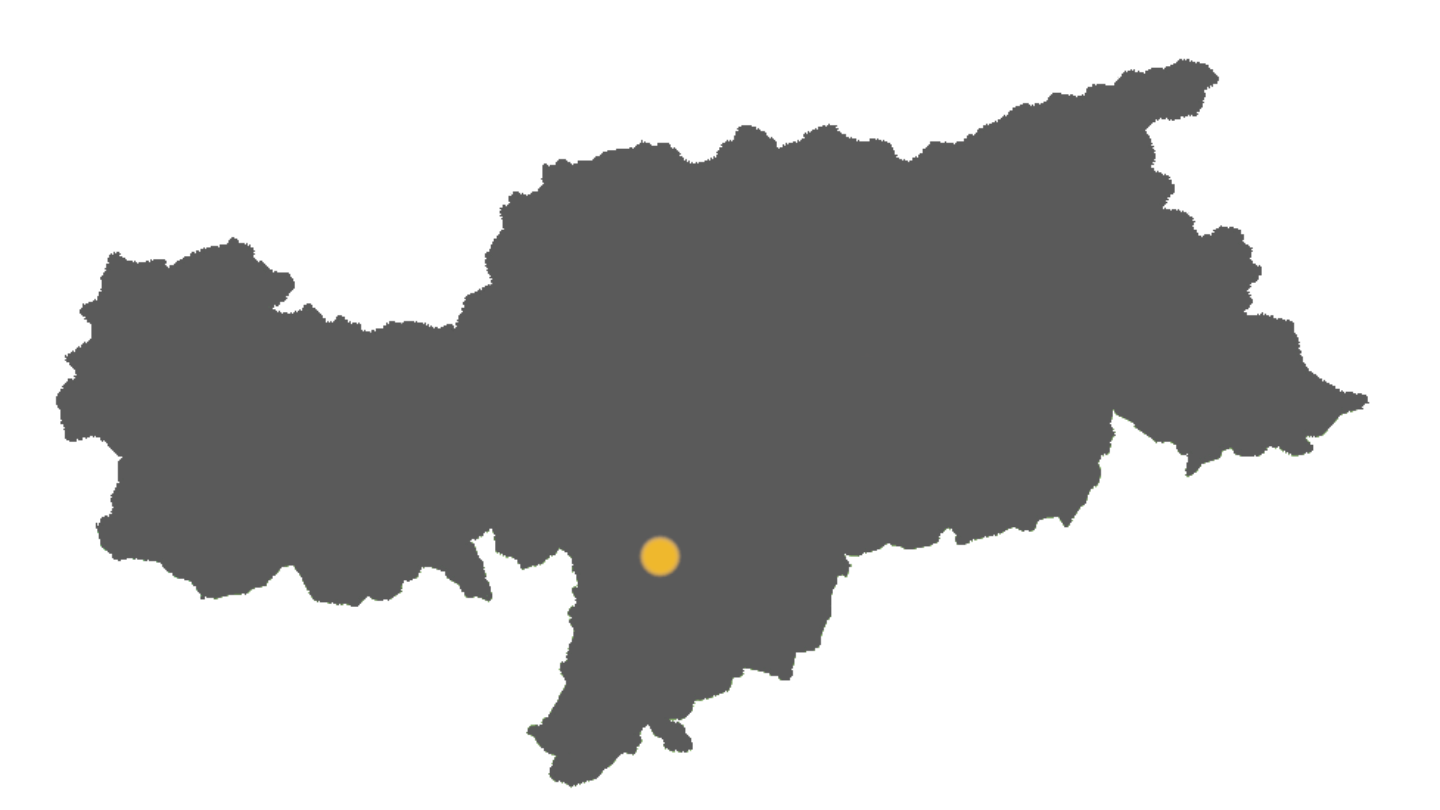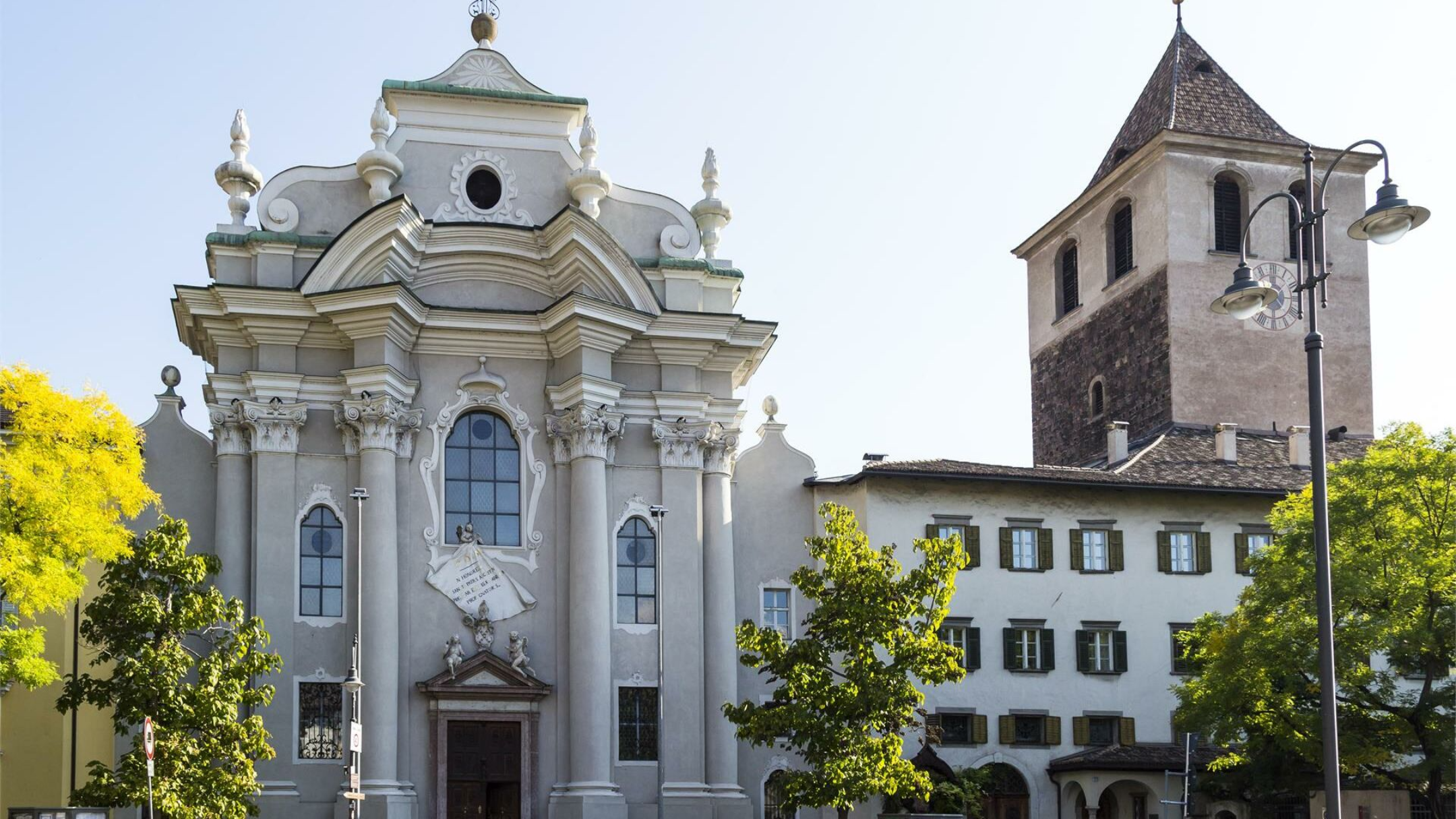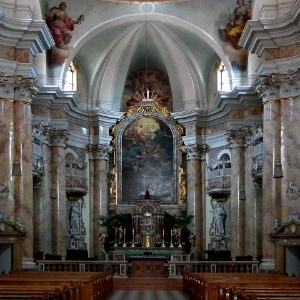History
When the canons of Santa Maria in Augia moved to the old castle of Gries, which was originally owned by the Counts of Tyrol, in 1406, they needed to adapt the structure to fit the needs of monastic life. One of their first construction works was to build the two-nave monastery church with its elegant Gothic chancel to replace the old Romanesque chapel. The congregation soon outgrew this church, even though its location inside the monastery meant it was difficult to access. It was the provost Albert Martin Prack zu Asch und Angerburg (1753-1781) who decided to build a new church in 1768. He identified an area to the north of the monastery complex near the stables and to the left of the Benedictine monastery to accommodate it. Antonio Giuseppe Sartori (Castione 1714 – Vienna 1792) was chosen as the architect on account of his previous work on Novacella Augustine Abbey near Bressanone, where he would also go on to build the magnificent library several years later. Upon signing the contract on 30 January 1769, Sartori committed to finishing the build within three years. The first stone was laid on 8 April and work proceeded swiftly. On 14 September 1771, the Feast of the Cross, the golden cross was raised onto the dome roof lantern to signal that the build was complete. The interior decoration needed much longer, owed partly to the historical context. Most of the work was carried out by Tyrolese painter Martin Knoller. Joseph II’s religious reforms led to the suppression of many monasteries during the 1770s and 1780s. While Gries Monastery managed to escape secularisation, it could not prevent the imperial government from meddling in its administrative practices and financial management. This slowed progress down greatly. The church compensated for its lack of funds by acquiring furnishings from churches which were dissolved during those years: Gries Annunciatine church and the Dominican churches in Trento and Bolzano. The pews, confessional booths and even the floor slabs came from the latter. Thus, work proceeded and the church was dedicated in August 1788. The situation eased when the Holy Roman Emperor Joseph II died in 1790. The new provost, Augustin Nagele, made progress and completed the church’s decoration despite the hardships of the French Wars. Tyrol ceding to the Kingdom of Bavaria in 1805 left its mark on the church and monastery: two years later it was secularised and Saint Augustine’s Church and chapter became a simple parish. In 1845, priests from Muri in the Swiss canton of Aargau arrived in Gries. Their monastery was closed in 1841 following religious clashes within the canton at that time. They were invited to transfer to the monastery in Bolzano, which the Augustine clergy had left when it was secularised in 1807. This was supported by the House of Habsburg which had overseen the foundation of Muri in 1027. The Holy See built Gries Monastery in 1852 as a priory for Muri Abbey, to whom it transferred the right of perpetual usufruct of Saint Augustine’s Church.
Restorations
In the church, some of the altarpieces were restored just a few years after the arrival of the Benedict monks in 1848. However, significant efforts to restore the church took place between 1906 and 1909. Painter Martin Valtingojer (1869-1947) oversaw the restoration of several paintings, overpainted the roof lantern, retouched the fresco on the central nave vault and regilded the fresco frames. He also carried out more heavy-handed works, as was common at that time, partly altering the look of the inside: new decorations under the dome connections and the intrados of the windows were added, the capitals on the half-columns and half-pilasters were partially gilded and reclad with marble and the balcony pulpits were repainted. Just a few decades later in 1976, new restorations removed these arbitrary additions. Part of the gilding was kept but toned down, and the dark windows inserted in 1874 were removed. Thus, the original polychromy could be seen in the right light conditions. In addition, a new marble flooring based on the original design was laid, the pews dating back to 1908 were rearranged, and confessional booths and a new lighting system were added. The façades were cleaned in 1980. In 2004, the roofing was replaced and the exterior walls were repainted. The original dark grey painted decorations on the latter were uncovered and restored. The furniture was cleaned, while the choir stalls returned to their original early twentieth-century format. In 2009, the frames of the portal and windows, and the avant-corps columns were cleaned and reinforced.
The territory of Bolzano Bozen
Bolzano is a place where the traditions of the past intertwine with the challenges of the future. Innovation and sustainability are the keywords for the new development of a city that is able to look to the future while maintaining strong ties to its roots and values.


Contacts "St Augustine’s Monastic and Parish Church"
- Address Piazza Gries, 21, 39100 Bolzano BZ
- Phone (+39) 0471283089
- Email info@pfarreigries.com
